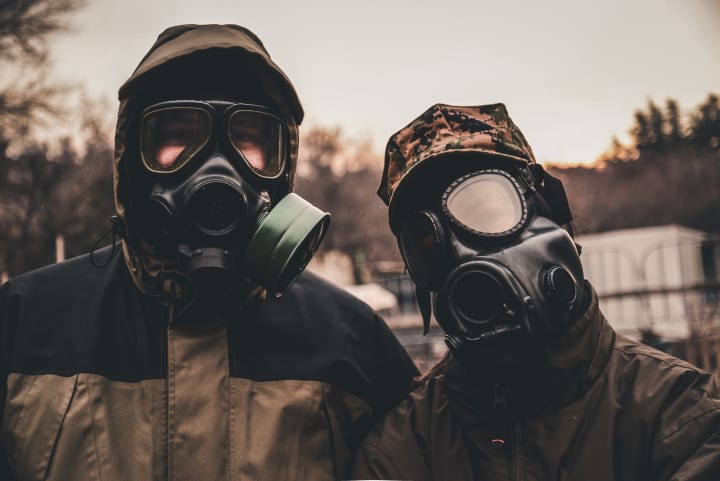
The damage to the body, caused by a large dose of ionizing radiation is called radiation sickness or radiation poisoning. The amount of radiation the body has absorbed will determine how sick the person will be. Radiation poisoning is a very serious condition and is fatal in most cases because at the moment there is no treatment to repair cells that have been damaged. Nevertheless, there are some drugs that can remove radioactive particles from the body. Radiation poisoning occurred in Hiroshima and Nagasaki due to the atomic bomb, and later, it happened in nuclear industrial accidents, such as the one in Chernobyl.
Several factors determine the severity of the sickness. The distance between the radiation source and the victim, the time of exposure, how much of the body was exposed, and the strength of the radiated energy all have an influence on the severity of the symptoms. The effects become visible after the exposure to several hundred rads.

Symptoms are also determined by the sensitivity of the affected tissue. The most sensitive types of tissue are the gastrointestinal system and the bone marrow.
Immediately after exposure, the victim will have the first symptoms, such as nausea, vomiting, pain, difficulty breathing, tachycardia (rapid heartbeat), and they can even lose consciousness. The closer the victim is to the source of radiation, the faster the symptoms will occur. Then they stop for a while. And after this latency period, really serious symptoms will develop.

Symptoms involve different body systems, such as the gastrointestinal system and the hematopoietic (which forms blood cellular components) system (both of those systems being very sensitive to radiation), as well as the nervous and cardiovascular systems.
Gastrointestinal symptoms appear at a relatively low level of exposure, about 400 rads and above, and they are characterized by nausea, vomiting, diarrhea, dehydration, vascular imbalance, plasma volume reduction, and infection.

Hematopoietic sickness occurs at an exposure situated between 200 to 1000 rads. The characteristic symptoms are fever, nausea, vomiting, and anorexia (lack of appetite). These symptoms will subside after 24 to 36 hours. A latent phase follows when the spleen, bone marrow, and lymph nodes atrophy. This leads to an underproduction of blood cells, which in turn leads to a susceptibility to infection. The lack of blood platelets (these are the blood cells that stop the bleeding and repair the injured blood vessels) leads to hemorrhage.
Exposure to more than 3000 rads leads to nervous and cardiovascular symptoms. This type of sickness is very severe and always fatal. Just like in the previously described types of sickness, symptoms begin with nausea and vomiting. Then, they continue with confusion, anxiety, and loss of consciousness. After about 6 hours convulsions will occur and coma and death will follow in no more than 3 days.

Besides these symptoms caused by exposure to high levels of radiation, exposure to low levels is also very dangerous. Inflammation of the heart muscle or the sac around the heart, kidney failure, cataracts, anemia, skin redness, atrophy, and calcification of the musculature can occur. Different types of cancer are very likely to happen as well (skin, bone, thyroid cancer, or leukemia). Another serious result of radiation, which can have an effect not only on the individual but also on his offspring is genetic damage. Radiation produces genetic mutations that are passed down to children and result in genetic defects in the offspring.
To understand how severe the contamination is, doctors ask when the nausea symptoms first occurred. The later they occurred, the less exposure the individual had. Geiger counters can also indicate the amount of radiation the body was exposed to. Although there are few treatment options for radiation sickness, some measures can be taken. Washing the skin and removing the outer layer of clothing can reduce the contamination with radioactive dust. Potassium iodide, Prussian blue, and other substances can reduce the absorption of certain radioactive substances by the body. For more severe effects, the treatments are only symptomatic.






Comments
There are no comments for this story
Be the first to respond and start the conversation.